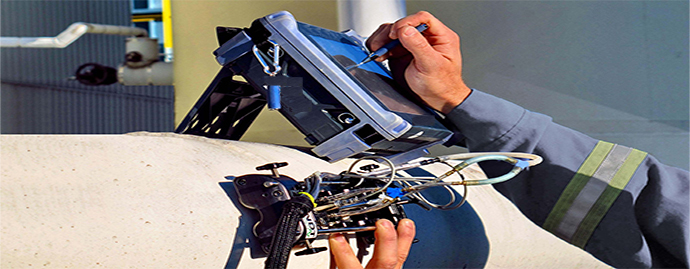| Start Date | End Date | Country | City |
|---|

 +966 920007771
+966 920007771

Objectives
- The objective of the course is to present an overview of Acoustic Testing, identifying the advantages and limitations of this as compared to other methods of Non-destructive Testing.
Outlines
Principles of Acoustic Emission Testing
- Characteristics of acoustic emission
- Continuous emission
- Burst emission
- Emission/signal levels and frequencies
- Sources of acoustic emission
- Sources in crystalline materials-introduction
- Sources in nonmetals-introduction
- Sources in composites-introduction
- Other sources
- Wave propagation-introduction
- Wave velocity in materials
- Attenuation
- Reflections-multiple paths
- Source input versus signal output
- Repeated loadings: Kaiser and Felicity effects and Felicity ratio
- In metals
- In composites
- Terminology (refer to acoustic emission glossary, ASTM E1316)
Sensing the Acoustic Emission Wave
- Sensors
- Principles of operation
- Construction
- Frequency
- Sensor attachment
- Coupling materials
- Attachment devices
Instrumentation and Signal Processing
- Cables
- Coaxial cable
- Twisted pair cable
- Noise problems in cables
- Connectors
- Signal conditioning
- Preamplifiers
- Amplifiers
- Filters
- Units of again measurement
- Signal detection
- Threshold comparator
- Units of threshold measurement
- Sensitivity determined by gain and/or threshold
- Signal processing
- Waveform characteristics
- Discrimination techniques
- Distribution techniques
- Source location techniques
- Single channel location
- Linear location
- Planner location
- Other location techniques
Acoustic emission test systems
- Single channel systems
- Multichannel systems
- Dedicated industrial systems
- Accessory techniques
- Audio indicators
- X-Y and strip chart recording
- Oscilloscopes
Acoustic Emission Test Techniques
- Equipment calibration and setup for test
- Calibration signal generation techniques
- Calibration procedures
- Sensor placement
- Adjustment of equipment controls
- Discrimination technique adjustments
- Loading procedures
- Type of loading
- Maximum test load
- Load holds
- Repeated and programmed loadings
- Rate of loading
- Data display
- Selection of display mode
- Use and reading of different kinds of display
- Noise sources and pre-test identification techniques
- Electromagnetic noise
- Mechanical noise
- Precaution against noise
- Electrical shielding
- Electronic techniques
- Prevention of movement
- Attenuating materials and applications
- Data interpretation and evaluation: introduction
- Separating relevant acoustic emission indications from noise
- Accept/reject techniques and evaluation criteria
- Reports
- Purpose
- Content and structure
Codes, Standards and Procedures
- Guidetype standards (glossaries, calibration, etc.)
- Standardized/codified acoustic emission test procedures
- User-developed test procedures
Who Should Attend
- The course is designed for anyone who is interested in satisfying the classroom training requirements for Acoustic Testing Level I certifications or who needs a thorough knowledge and practical experience of Acoustic Testing Method.
Duration
5 Days









